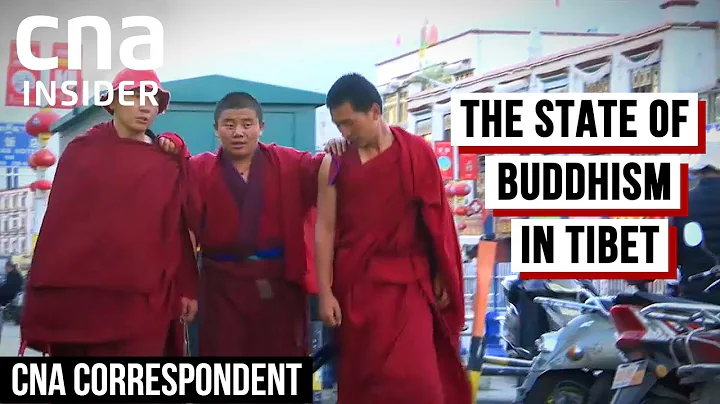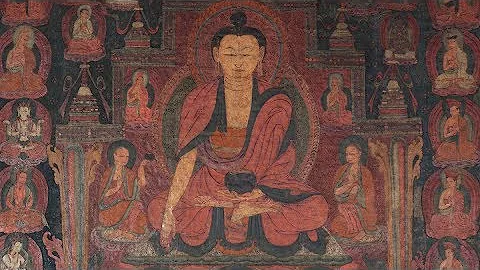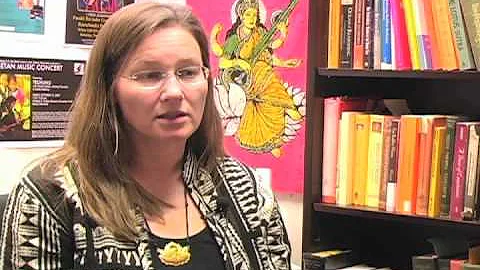
The picture shows Commander-in-Chief Zhu De and the Fifth Living Buddha of Geda (Source: China Tibet Network)
In Tibetan areas, there is a famous thangka depicting the scene where Commander-in-Chief Zhu De of the Red Army met with the Living Buddha of Geda. Behind it is a touching past.
In March 1936, the Long March of the Red Fourth Front Army reached the Ganzi and Luhuo areas. In order to prevent the Red Army from moving north, the Kuomintang government colluded with reactionary lamas and chieftains in Tibetan areas, organized reactionary armed forces, slandered the Communist Party and the Red Army, and strictly ordered the masses not to sell grain to the Red Army, not to lead the way for the Red Army, and not to be general officers for the Red Army. (Translator), coercing the masses to go up the mountain to hide, in an attempt to put the Red Army in a desperate situation. Therefore, wherever the Red Army went, it was empty and faced serious difficulties of lack of supplies.
At this time, it was the cold winter season. Zhu De summoned the heads of various ministries and said to everyone: "Currently, the rations for tens of thousands of people in our army have not yet been provided, and many people do not have cotton-padded clothes. The Tibetan residents in this area , suffering from layers of exploitation and oppression, we are so poor that we can't even eat tsampa. In addition, the local products are poor, and it is difficult to raise food rations. We basically rely on wild vegetables to satisfy our hunger. Even so, we should resolutely implement our army's policy. In terms of discipline and ethnic policy, officers and soldiers must be educated to abide by the following regulations: first, respect local customs and habits; second, care for every plant and tree of the Tibetan people; third, do not enter Tibetan houses until they return home. "Fourth, we must take good care of and feed the cattle and sheep that the Tibetans have left at home. At the same time, we must do a good job in propaganda and explanation and mobilize the Tibetans to return to their homes." He also found "Tong" who had been operating with the Red Army for a period of time. Secretary" talked and asked him to take a few people up the mountain to look for Tibetans, do propaganda and explanation work, and mobilize everyone to come back. Once the
command is issued, the command line is prohibited. Troops swept the streets clean and slept under trees or under eaves. If there is no food, they go to the nearby places to pick mushrooms and dig wild vegetables to satisfy their hunger.
html In April, spring on the plateau has quietly arrived. Seeing that spring plowing was approaching, Zhu De mobilized the headquarters and some troops to help Tibetans plant the land. At the mobilization meeting, he said to the commanders and soldiers: "As the saying goes, people mislead the land for a while, and the land misleads the people for a year. Now, the Tibetan compatriots don't understand us yet, and they can't come back to farm for the time being. We can watch the good spring sowing season begin. Sneaking by under your nose? No! If we can't plant it this season, what will the Tibetan people eat in the future? We are brothers and we need to help the Tibetan people plant the land well. This is our responsibility. obligations and responsibilities”. Zhu De himself also worked with a hoe every day.There is a Baili Temple near Garze County. Its abbot is the Fifth Geda Living Buddha. He was born in poverty. When he was 7 years old, he was recognized as the Fifth Geda Living Buddha of Ganzi Baili Temple. When he was 17 years old, he went to Lhasa Ganden Temple to study scriptures. , obtained the Geshe degree 8 years later, and then returned to Baili Temple to "preach" to the poor farmers, herdsmen and believers, which had a great influence in the local area.
After the arrival of the Red Army, the Living Buddha of Geda saw with his own eyes the Red Army officers and soldiers' exemplary implementation of the party's ethnic and religious policies, respecting the customs and habits of the Tibetan people, respecting religious beliefs, protecting temples, and not harming the people. From this, he judged that the Red Army was not like the Kuomintang and the Kuomintang. Burning, killing, and looting as promoted by some chieftains is an army that can liberate the working people from the sea of misery. It is a good friend and great savior of the Tibetan people.
The Lama of the Geda Living Buddha Sect sent highland barley more than one hundred and thirty stones and twenty-two stones of peas to the Red Army. Not only did he spend all the Baili Temple had, but he also personally went to the nearby Yalong Temple and Genglong Temple to mobilize The two temples provided money and food to support the Red Army. Later, the Living Buddha of Geda personally went to the mountains to recall the villagers who had fled to the mountains and mobilized them to try their best to support the Red Army. At this time, the Tibetans also felt that the Red Army was a good team. They told each other that their fear gradually disappeared, and they came back one after another to sow the fields with the Red Army.
Geda Rinpoche's deeds of enthusiastically helping the Red Army soon spread throughout the country and even reached the Red Army headquarters, attracting great attention from Zhu De and others.
One day, Zhu De personally went to Baili Temple to visit Geda Living Buddha and had a long and heart-to-heart talk with him. Zhu De explained to him the purpose and significance of the Red Army's Long March, and encouraged him to seek benefits for the poor Tibetans.It was this long conversation that not only allowed Geda Living Buddha to see how the top leader of the Red Army was so hard-working, simple, kind and kind, but also allowed him to get to know the Red Army better and understand what revolution is and why it is necessary to carry out revolution. Since then, the Living Buddha of Geda has embarked on a glorious road of safeguarding the unification of the motherland and national unity.
During the few months when the Red Army was in Ganzi, Zhu De had conversations with the Living Buddha of Geda nine times. Through heart-to-heart talks again and again, Zhu De and Geda Living Buddha became close friends and remained lifelong friends, composing a song of national unity that has been sung by Han and Tibetan compatriots for a long time. In June 1936, the Tibetan people's own government, the Chinese Soviet Boba government, was established in Ganzi, and Geda Living Buddha was elected as the vice chairman.

The picture shows the statue of Commander-in-Chief Zhu De and the Fifth Geda Living Buddha in the memorial hall (Source: China Tibet Network)
Thangka: Zhu De and the Geda Living Buddha
With the support and help of the Geda Living Buddha, Tibetan compatriots actively supported and supported the Red Army . After several months of joint efforts, the officers and men of the Fourth Red Army not only obtained most of the cold-proof equipment they needed, but also knitted more than 20,000 pieces of woolen clothes for their comrades from the Second and Sixth Red Army Corps who were about to arrive.
htmlOn July 2, the Second and Sixth Red Army Corps gathered in Ganzi and successfully joined forces with the Fourth Front Army of the Red Army. At the grand party celebrating the meeting of the two main forces, Zhu De said affectionately: "We can survive and develop on this land only because of the support and help of our Tibetan compatriots. We will continue to go north, and on our way forward We still have to trek through vast grasslands, but as long as we have the support of our Tibetan compatriots, we will be able to overcome all difficulties." html In mid-July, the Red Army continued its march north, and the Tibetan compatriots came to see them off. Before leaving, Zhu De said goodbye to Geda Living Buddha. Zhu De wrote an inscription on the red satin for the Living Buddha Geda: "Friend of the Red Army, Leader of the Tibetans". He presented his octagonal military hat to the living Buddha Geda and said to him: "I leave this hat to you. Seeing it is like seeing the Red Army. We will definitely come back in as little as 5 years and as many as 15 years." ”After the Red Army moved north, the Living Buddha of Geda took the risk to bring more than 230 sick and wounded Red Army soldiers to the temple for protection, and carefully treated their illnesses and injuries. He also collected and preserved the documents on the Red Army's protection of the temple, the mutual aid agreement signed with the Red Army, and the seal of the Boba government. He missed the Red Army very much and was concerned about the Red Army's march north to fight against Japan. He often inquired about Commander-in-Chief Zhu, General Liu Bocheng and the Red Army. He firmly believed that the Chinese revolution would surely win, and often told his relatives and friends: "The Red Army will definitely come back, and the Tibetan people will definitely stand up."
In 1937, Ma Qiwu, the Kuomintang supervisor who went to Kangzang, visited Ganzi. Machwu specially brought Xu Yuanju, the head of the Xichang Station of the Military Command , to Baili Temple to "visit" the Geda Living Buddha, and asked the Geda Living Buddha to join the Kuomintang in order to "restore the influence." This request was sternly rejected by Geda Living Buddha. Soon, the Kuomintang sent people to mobilize Geda Living Buddha to serve as a senator of Xikang Province, but he was also rejected.
In order to get rid of the entanglement of the Kuomintang, Geda Living Buddha took the seals and documents of the Ganzi Boba government and took refuge in Lhasa in the name of pilgrimage. While in Lhasa, he was still very concerned about the Red Army. He kept a photo of Zhu De that he had collected in the Buddhist hall. He often recited sutras and blessings for Zhu De and prayed for the safety of the Red Army. He also often inquired about news about the Red Army and promoted the Communist Party's policies to friendly people in Lhasa. He stayed in Lhasa for 10 years and did not return to Ganzi Baili Monastery until 1947.
In 1950, the Central Committee of the Communist Party of China sent a telegram to Geda Living Buddha, inviting him to participate in the Political Consultative Conference as a special member. Tibet had not yet been liberated at that time, and Geda Living Buddha, who was the vice chairman of the Xikang Provincial People's Government, took the initiative to go to Tibet to persuade peace. In his reply to the central government, he said: "For the early liberation of Tibet, I don't care about anything now. I will wait until the Tibet issue is resolved before going to Beijing to see the commander-in-chief." "I will come to attend the meeting after Tibet is liberated ." The central government agreed to his request and sent a special plane to airdrop the supplies he needed to enter Tibet.
html On July 10, Geda Living Buddha resolutely decided to go to Tibet to persuade peace. On the way, he was poisoned by British spies who prevented him from entering Tibet to persuade peace.On August 22, 1950, Geda Living Buddha passed away in Qamdo, China, at the age of 47.In order to commemorate the profound friendship between Zhu De and the Living Buddha of Geda, the Tibetan people specially made a thangka painting of the meeting between Zhu De and the Living Buddha of Geda. In 1993, 's Garze County also built the "Commemorative Hall for Commander-in-Chief Zhu De and the Fifth Gedda Living Buddha" in Xuri Ridge.
Source: Website of the Central Party History and Literature Research Institute, author: Zuo Zhiyong






















